
It was twenty years ago this month that I left the bike business. I can’t remember the exact date in October 1993, but I do remember it was October. I had not planned to retire, and I could have gone on for many more years, but I was forced out of business (Strange as it may seem now.) by the mountain bike.
I had a good run through the 1980s, at the height of my production I had as many as six employees, and together we produced 25 frames a month. The employees prepared and fed me materials so I could concentrate on brazing the frames together. My employees also did most of the finish work and I employed a full time painter.
As long as I could sell 20 or 25 frames a month I had a very lucrative little business. But by the late 1980s, early 1990s the mountain bike was becoming more and more popular and as a result sales of road frames were dropping rapidly.
At first there were separate road bike enthusiasts, and mountain bike enthusiasts, and there were separate mountain bike builders catering for the MTB crowd. Over the years these mountain bike builders had each built up a following, which made it tough for someone like me to suddenly switch and break into that market. I did produce a mountain bike, (Picture above.) but honestly I hated it, and my heart was not in it.
I had spent a great deal of time and money attending the Interbike Show every year, and as a result I had built up a nationwide network of bicycle dealers. When these dealers switched from selling road bikes to mountain bikes I felt betrayed, like someone whose spouse had left for a new love. In hindsight I realize that bike store owners had to do whatever they needed to do to stay in business. It was nothing personal.
I was not the only one effected by the road bike slump. There was a company in Florida named “Ten Speed Drive Imports” that had imported Italian bikes, frames and equipment since the 1970s. A good friend of mine was a sales rep for Ten Speed Drive in Colorado. He told me by 1993 he would walk into bike stores that had previously been regular customers for many years, they told him, “Don’t even open your order book, we are not selling road bikes anymore.” Ten Speed Drive went belly up, about the same time I left the business.
Had the Internet been in place as it is today, I may have survived as a one man business, selling direct to the few hard core road bike enthusiasts that remained. But that wasn’t the case. By early 1993 things were so bad, I was down to two employees, Russ Denny, who had been my apprentice since 1985, and another young guy who was my painter.
When I did my taxes in April 1993 my accountant told me, “I have some good news, and some bad news. The good news is, you didn’t make enough in 1992 to pay taxes, the bad news is, last year your employees made more than you did.”
It was obvious that I could not continue in this way, I was ready to liquidate all the equipment and walk away. Russ begged me not to do that, and I felt somewhat obligated because he came to me aged 18, straight out of high school and now at 26 years, framebuilding was the only thing he knew. I allowed the two to stay on, unpaid, and they survived by doing freelance work.
By October 1993 I could no longer pay the rent and support myself. I was thoroughly burned out and hated the bike business and anything to do with bikes for that matter. I turned the whole operation over to Russ Denny. As a single young man, he was able to survive by giving up his apartment, and sleeping on a mattress in the frame shop. Which I’m sure was against all regulations.
I was not prepared to live at that level of poverty. I went on to take a job as a production manager with a company that manufactured bowling equipment, and I actually made some good money for a change.
Looking back, I have no regrets. I have a body of work out there that has survived longer than my California business. As long as people are interested, I will continue to write here and maintain my bike registry. Above all I can enjoy riding a bike, something I could not do while I was engaged in the bicycle business.
Today I am a writer and songwriter. I make a small amount from freelance writing, and when people hear my music, some say, “Why don’t you go to Nashville and try to sell your songs?” To that I would answer. “No thank you.” The bicycle business drove me to hate the bicycle, for many years I did not own or ride one. I love my music and the people it brings me in touch with, I will not allow the music business to drive me to hate it.
 To Share click "Share Article" below
To Share click "Share Article" below
 Mon, February 19, 2018
Mon, February 19, 2018 

 Russ Denny
Russ Denny 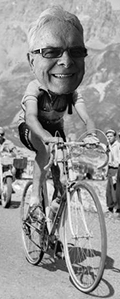









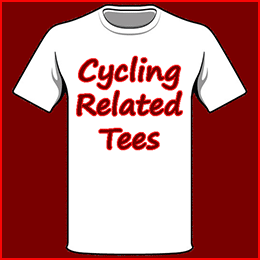
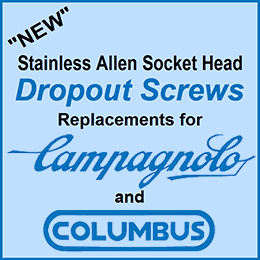







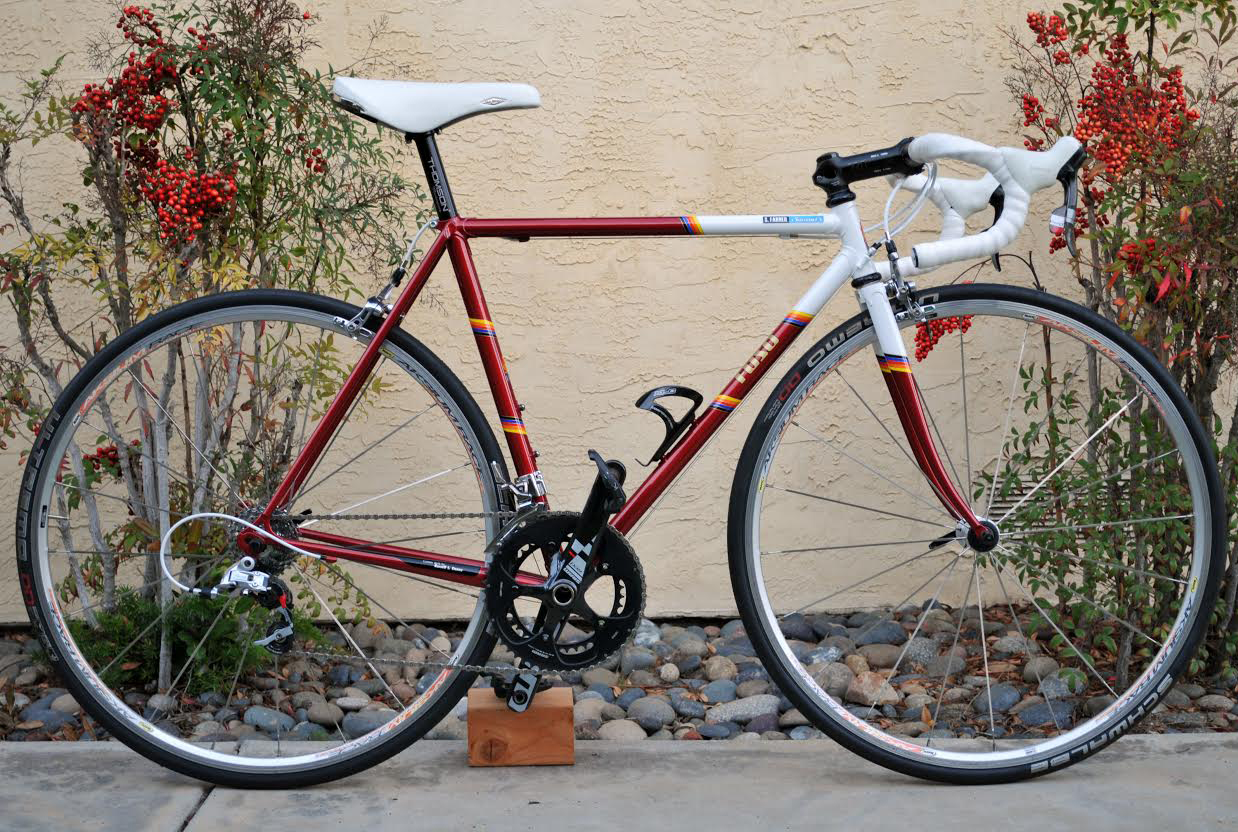
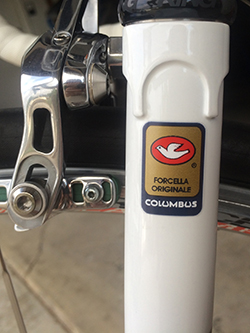

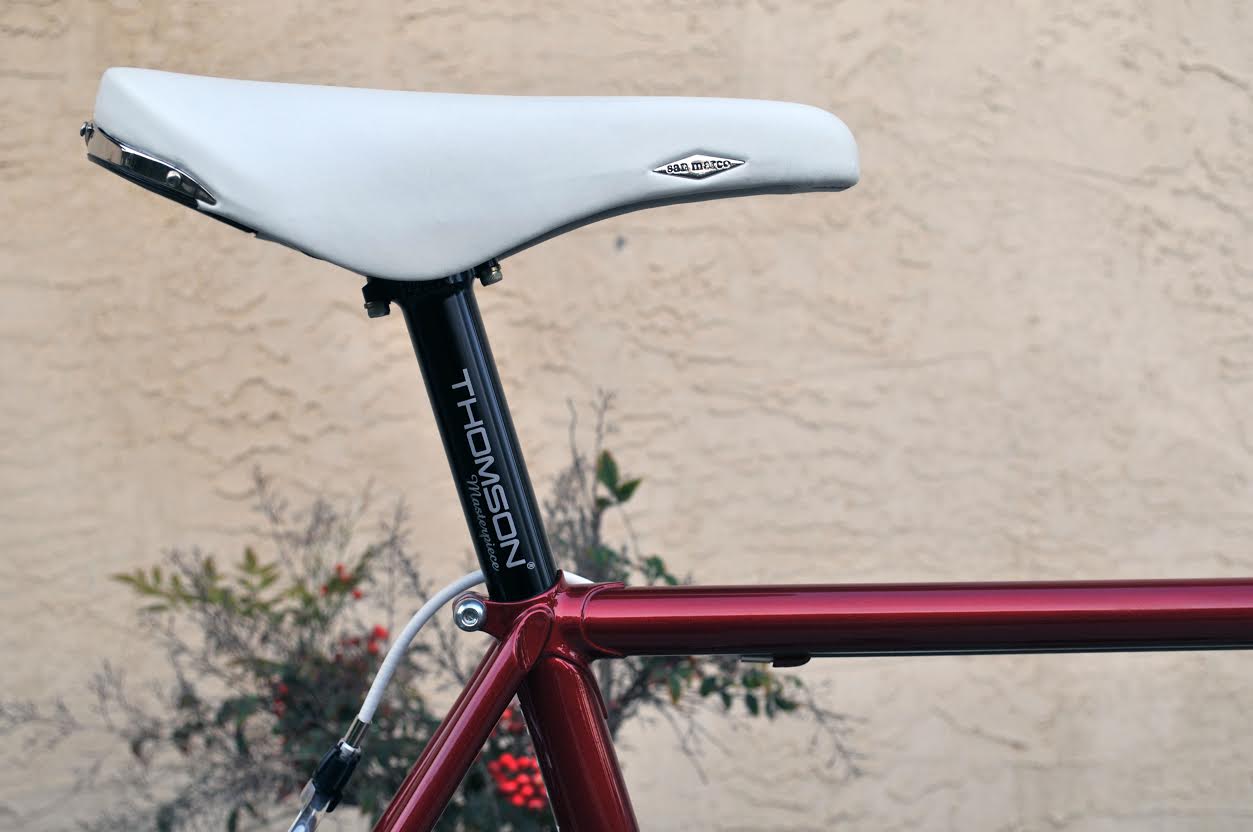
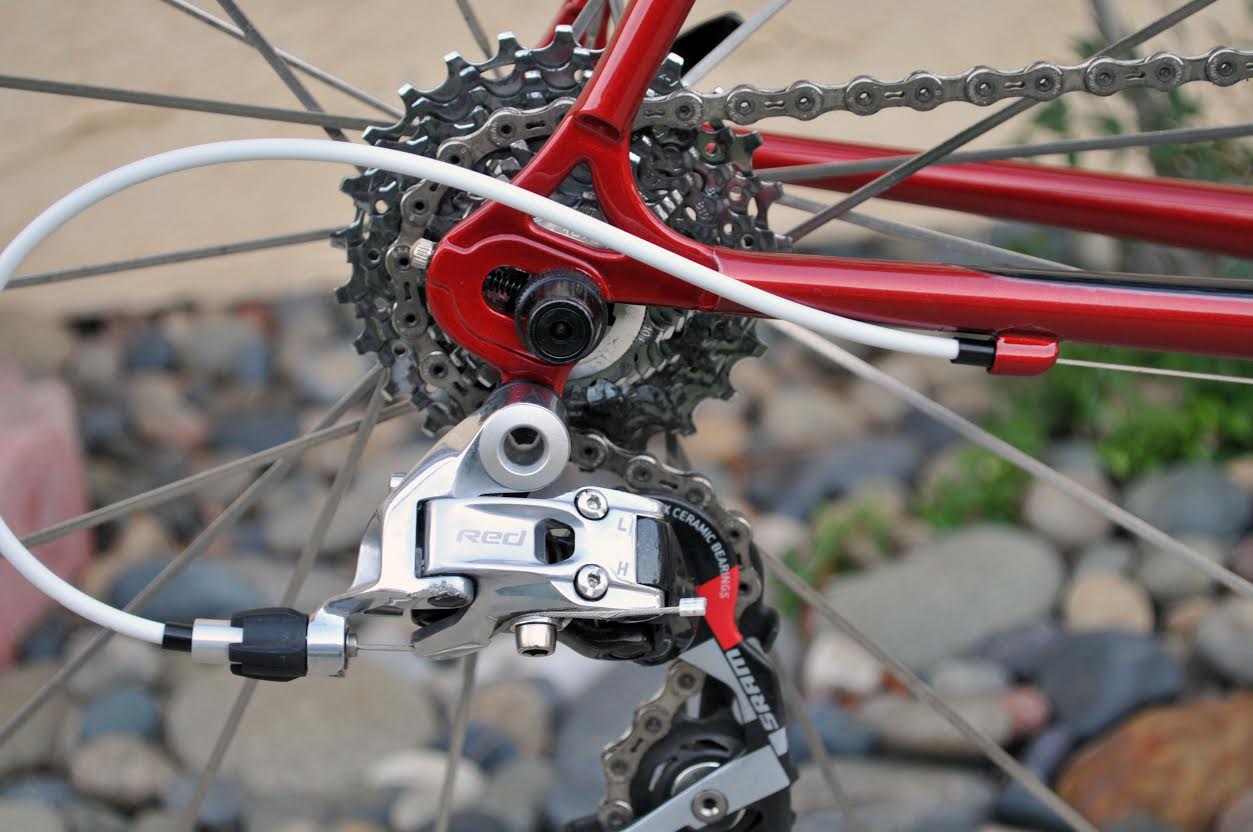
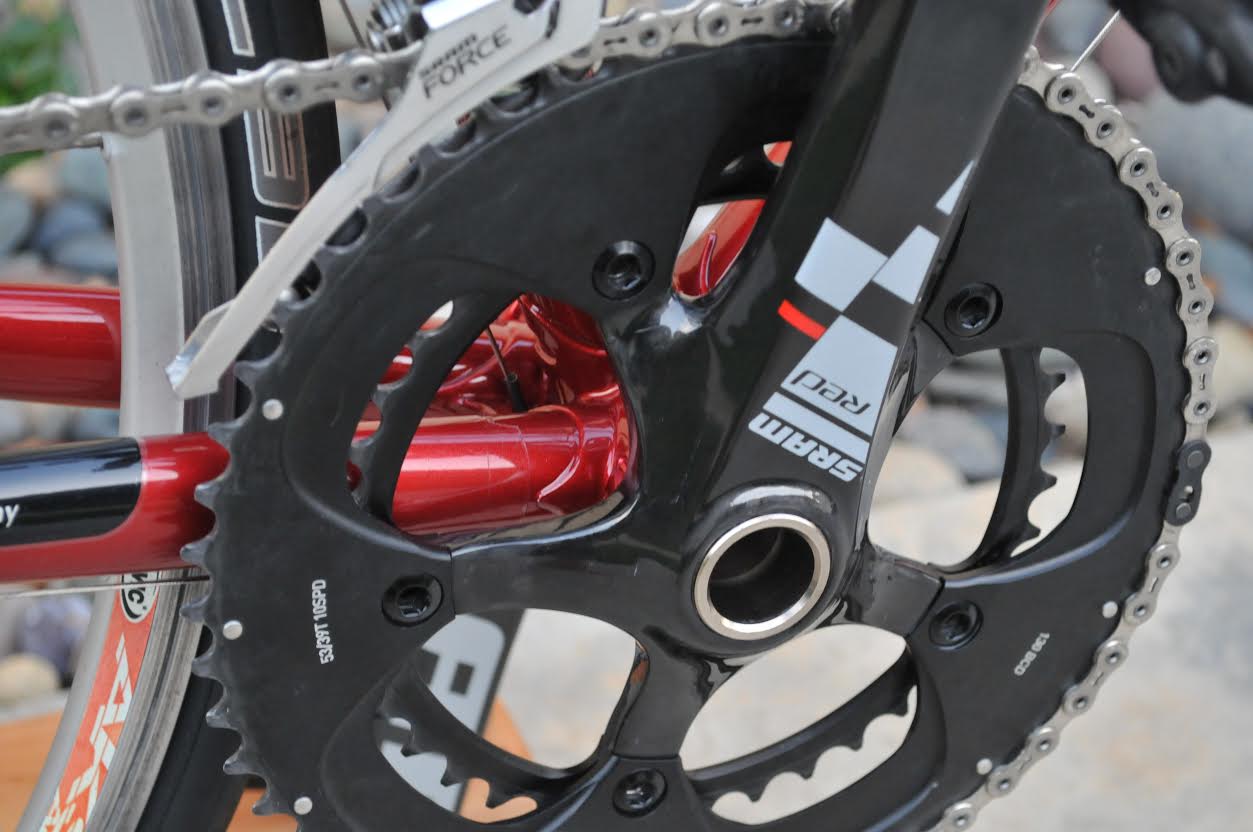
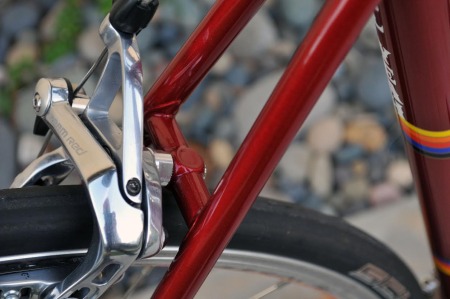









Retro-Mod: Pickin’ n’ Choosin’
Going Retro-Mod has its advantages. Vintage lugged steel frames (Sometimes in mint condition.) can be picked up at bargain prices, and the ride quality is often far superior to that of a modern CF or aluminum frame. So there is the money saving incentive, along with value for your buck.
A few ounces heavier maybe, but often that doesn’t concern the cyclist riding for exercise and pleasure only. Why not ride a bike that is a pleasure to ride? Going retro-mod you have the best of both worlds. The ride quality and handling characteristics of the vintage frame, with the wider gear range, and fingertip shifting, together with better stopping power the modern brakes offer.
Outside of vintage frame and modern component group, one can pick and choose, which saddle, bars and stem, and pedals. New or old school. Longtime friend and regular commenter on this blog, Steve Farner, emailed me this week to say he had switched back from clipless pedals to toe clips and straps, and also tubular tires.
Steve raced back in the 1980s when toe clips and straps were the only option. When Steve went retro-mod back in 2014, he didn’t actually start with a vintage frame, but rather had Russ Denny build him a brand new retro style Fuso frame, with a level top tube, standard 1 inch and 1 1/8 inch tubes. The only exception was the frame had a plain steerer and a threadless headset. (See above.)
On his switch back to toe-clips, Steve said, “I have found getting into and out of toe clips almost silent. I get into the pedal quicker than clipless, and as a bonus, if you miss positioning, you just push on the other side of the pedal, without your foot slipping off as it does with carbon shoe bottoms and carbon or plastic pedals. Just keep pedaling and flip the pedal later.
I am riding Giro Empire shoes, which use laces and fit like a glove. The slotted cleats I use are Yoshida Champ Cleats. Keirin (NJS) approved, modern cleats used by Japanese Track racers. They fit on Look Three-Bolt modern shoes, using only two of the bolt holes. I also kept my old Vittoria shoes from my racing days, the 80's, and have cleats for them, and sometimes use those shoes, which still work fine, just not as stiff.
But the Giro Empires get into and out of clips just as well as the old shoes, and being modern are stiffer soles and good to know you can buy them today.
The pedals I bought are MKS Supreme Track pedals. (Above.) Again they are Keirin, or NJS, approved and are quite striking in appearance. I have kept Christophe Steel Toe Clips all these years, which don't break as easily as the aluminum variety. I also have kept my Alfredo Binda Laminated White (Bianchi) Toe Straps, which I think I paid $25 for in 1980, but sell for over $100 used on Ebay today!
I like them because they don't stretch, don't need the twist in the pedals to stay in place, and do not flop while in use. I use the Cinelli toe strap buttons, chrome in this case to match the pedals and clips, which I like better than others because you can pull the straps all the way through to set wherever you like on the strap.”
The other switch Steve made was back to tubular tyres. He said:
“The wheels I am now riding are DT Swiss 190 Ceramic Bearing hubs, DT Swiss S.S. round spokes, and Mavic Reflex Rims, 32-Hole. These are a nice, light, low-drag set that match the steel frame and set-up much better than the Mavic Ksyrium SL Limited I had on.
The ride is quite impressive! Kind of like the difference between driving a sports car and a Prius. No comparison. No wonder tubulars are still preferred by pros. You just have to know how to care for them, and fix flats.
All together I like how the bike looks. I think if Russ presented this appearance to customers, they would be enthused to own, and most importantly, ride one! Because it is the ride that stays with the owner long after the B.S. sales pitch of modern bikes and equipment.”
Unusually, Steve’s bike is all new. Rather than go Retro-Mod he has actually gone Modern-Retro.
Footnote:
Here is another related article on aligning slotted cleats.